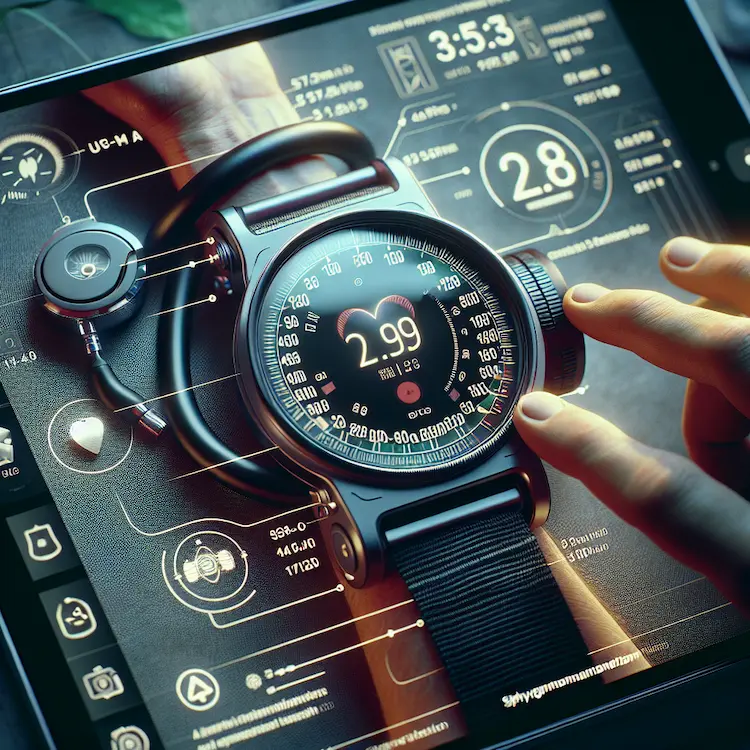Sphygmomanometers, devices used to measure blood pressure, have undergone significant technological advancements in recent years. These innovations have revolutionized the way we monitor and manage hypertension, a condition affecting millions worldwide. This article explores the evolution of sphygmomanometers, from traditional mercury-based devices to cutting-edge digital and wearable technologies.
The Evolution of Sphygmomanometers
Mercury Sphygmomanometers: The Gold Standard
For decades, mercury sphygmomanometers were considered the gold standard for blood pressure measurement. These devices consist of a mercury column, an inflatable cuff, and a stethoscope. While accurate, they are being phased out due to environmental concerns related to mercury toxicity.
Aneroid Sphygmomanometers: A Mechanical Alternative
Aneroid sphygmomanometers replaced mercury with a mechanical system of metal bellows and gears. They are more portable and environmentally friendly but require regular calibration to maintain accuracy.
Digital Sphygmomanometers: The Rise of Automation
Digital sphygmomanometers have largely replaced their mercury counterparts in clinical settings. These devices use oscillometric techniques to determine blood pressure, eliminating observer error and providing additional parameters such as heart rate.
Comparison of Sphygmomanometer Types
| Type | Advantages | Disadvantages |
|---|---|---|
| Mercury | High accuracy, considered gold standard | Environmental concerns, bulky |
| Aneroid | Portable, mercury-free | Requires frequent calibration |
| Digital | Automated, easy to use, additional parameters | May be less accurate in certain populations |
Recent Technological Advancements
Cuffless Blood Pressure Monitoring
One of the most exciting developments is cuffless blood pressure monitoring. These devices use photoplethysmography (PPG) technology to measure blood pressure without the need for a traditional cuff.
Wearable Devices
Smartwatches and fitness trackers now incorporate blood pressure monitoring capabilities, allowing for continuous, non-invasive measurements throughout the day.
Smartphone Integration
Many digital sphygmomanometers now offer smartphone connectivity, enabling users to track their blood pressure over time and share data with healthcare providers easily.
Accuracy and Reliability
While these technological advancements offer convenience and increased monitoring frequency, it’s crucial to consider their accuracy. Studies have shown that digital devices are generally as accurate as mercury sphygmomanometers when properly maintained and used.
Factors Affecting Accuracy
- Device calibration
- Proper cuff size and placement
- Patient position and movement
- Environmental factors (temperature, noise)
Clinical Implications
The shift towards digital and wearable blood pressure monitoring devices has significant implications for clinical practice:
- Increased Patient Engagement: Patients can more easily monitor their blood pressure at home, leading to better awareness and management of hypertension.
- Improved Data Collection: Continuous monitoring provides a more comprehensive picture of blood pressure variations throughout the day.
- Remote Patient Monitoring: Healthcare providers can access real-time data, enabling timely interventions and adjustments to treatment plans.
- Research Opportunities: Large-scale data collection from wearable devices can contribute to population health studies and personalized medicine approaches.
Future Directions
Artificial Intelligence and Machine Learning
AI algorithms are being developed to analyze blood pressure data and predict cardiovascular events, potentially revolutionizing preventive care.
Miniaturization and Integration
Future devices may be even smaller and more discreet, possibly integrated into clothing or accessories for truly unobtrusive monitoring.
Combination with Other Biomarkers
Advanced sphygmomanometers may incorporate measurements of other health indicators, such as blood glucose or oxygen saturation, providing a more comprehensive health assessment.

Practical Advice for Users
- Choose the Right Device: Consult with a healthcare provider to select a sphygmomanometer that suits your needs and has been validated for accuracy.
- Ensure Proper Use: Follow manufacturer instructions carefully, paying attention to cuff size and placement.
- Maintain Consistency: Take measurements at the same time each day and in similar conditions for meaningful comparisons.
- Regular Calibration: For aneroid devices, ensure regular calibration checks to maintain accuracy.
- Interpret Results Carefully: Remember that blood pressure naturally fluctuates throughout the day. Look for overall trends rather than focusing on individual readings.
Conclusion
Technological advancements in sphygmomanometers have transformed blood pressure monitoring from a clinical procedure to an accessible, continuous health management tool. While these innovations offer exciting possibilities for improved hypertension management and cardiovascular health, it’s essential to balance the convenience of new technologies with the need for accuracy and proper interpretation of results. As we move forward, the integration of AI, wearable technology, and comprehensive health monitoring promises to further revolutionize how we understand and manage blood pressure.


